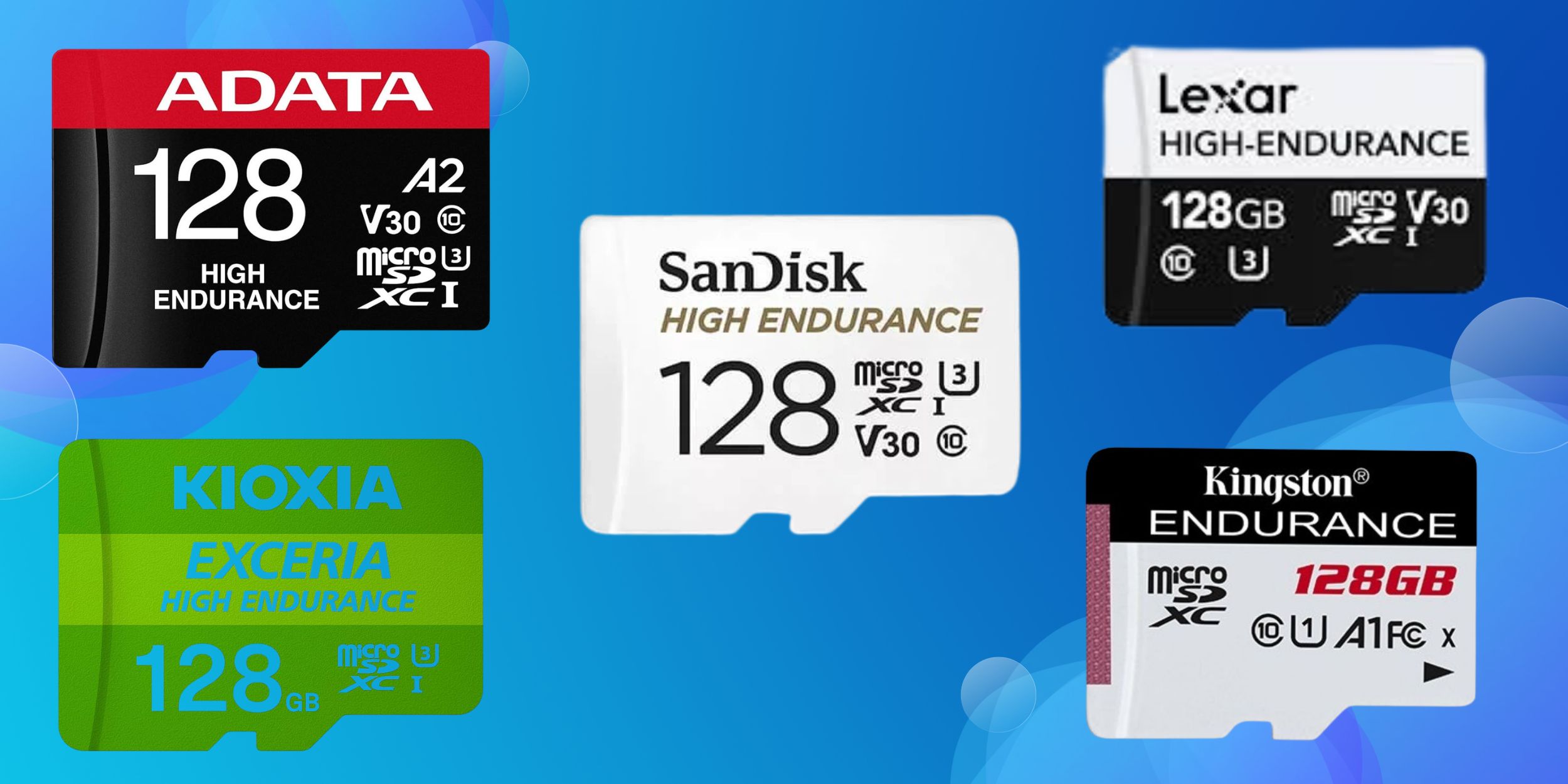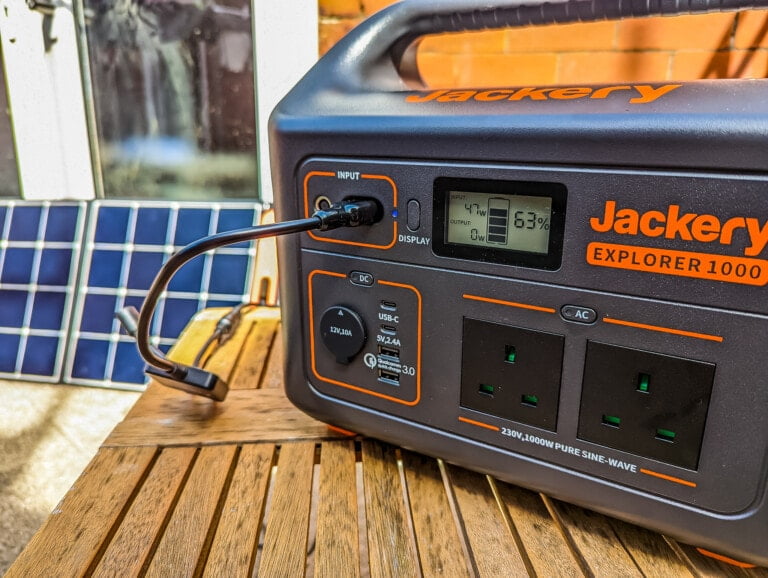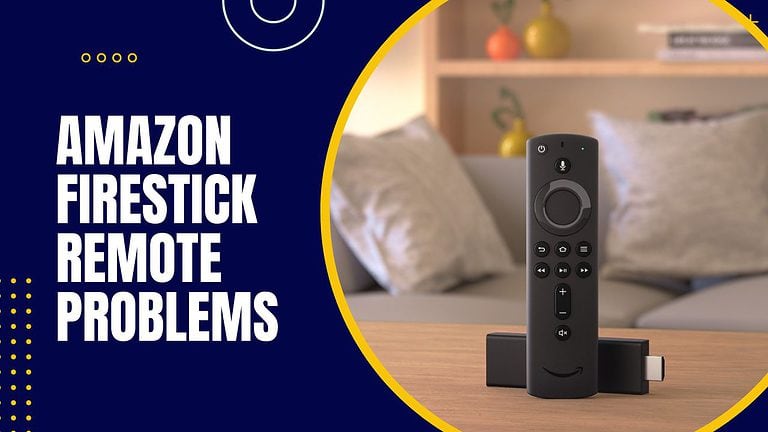Any links to online stores should be assumed to be affiliates. The company or PR agency provides all or most review samples. They have no control over my content, and I provide my honest opinion.
MicroSD cards are a core component in many modern devices, from dashcams and security cameras to drones and smart home gadgets. While standard cards suffice for occasional use, endurance microSD cards are specifically engineered for continuous, high-write environments.
These cards tend to cost a bit more, but it is a worthwhile investment. If you try and use a normal microSD card in a dashcam, there is a good chance that it will die within a years worth of use.
Related Content
- Botslab G980H 4K Dash Cam Review
- Nextbase IQ Smart Dash Cam Review
- Vantrue Element 2 Dual Dash Cam Review
What Are Endurance microSD Cards?
Endurance microSD cards are designed to withstand the constant writing and rewriting cycles typical in surveillance, dashcam, and similar applications. Unlike standard cards, which may fail prematurely when subjected to continuous use, endurance cards use higher-grade NAND flash and robust controllers to maximise lifespan and reliability.
Why Endurance Matters
- Continuous Recording: Dashcams and security cameras write data 24/7, quickly wearing out standard cards.
- Data Integrity: Lost or corrupted footage can have serious consequences, especially for security or legal evidence.
- Environmental Stress: Devices may operate in extreme temperatures, humidity, or vibration, requiring cards that can withstand harsh conditions.
Key Metrics for Reliability
Several metrics are used to assess the reliability of endurance microSD cards:
- TBW (Terabytes Written): Indicates how much data can be written to the card before it is likely to fail.
- Hours of FHD Recording: Expresses endurance in terms of continuous video recording.
- Warranty Period: Reflects manufacturer confidence in the product.
- Speed Class: Ensures the card can handle the write speeds required for high-resolution video.
Comparative Table: Endurance microSD Cards (128GB Models)
Links below go to Amazon and are affiliate links
| Brand & Model | Hours FHD Recording | TBW | Warranty | Speed Class |
|---|---|---|---|---|
| SanDisk High Endurance | 10,000 | 117 TBW | 2 years | U3 |
| SanDisk Max Endurance | 60,000 | 702 TBW | 10 years | U3 |
| Samsung Pro Endurance (2018) | 43,800 | 512 TBW | 5 years | U1 |
| Samsung Pro Endurance (2022) | 70,080 | 820 TBW | 5 years | U3 |
| Lexar High Endurance | 12,000 | 135 TBW | 2 years | U3 |
| Kingston High Endurance | 20,000 | 117 TBW | 3 years | U1 |
| ADATA High Endurance | 20,000 | 234 TBW | 2 years | U3 |
| Transcend High Endurance 350V | 30,000 | 351 TBW | 2 years | U1 |
| Kioxia Exceria High Endurance | 20,000 | 189 TBW | 3 years | U3 |
Source: Manufacturer datasheets and consolidated data.
Detailed Brand and Model Analysis
SanDisk High Endurance & Max Endurance

| Preview | Product | Rating | Price | |
|---|---|---|---|---|

| SanDisk 128GB High Endurance microSDXC card for IP cams &... |
£27.99 | Buy on Amazon | |

| SanDisk MAX ENDURANCE Video Monitoring for Dashcams & Home... |
£36.79 | Buy on Amazon |
SanDisk’s endurance cards are widely used and well-regarded. The High Endurance series offers up to 10,000 hours of FHD recording at 128GB, while the Max Endurance line increases this dramatically to 60,000 hours, with a 10-year warranty. These cards are built to withstand extreme temperatures, water, shock, and X-rays, and are rated U3 for sustained write speeds, making them suitable for 4K video.
Pros:
- High TBW and long recording hours
- Long warranty (up to 10 years for Max Endurance)
- Robust environmental protection
Cons:
- Premium pricing for Max Endurance models
Samsung Pro Endurance
| Preview | Product | Rating | Price | |
|---|---|---|---|---|

| Samsung PRO Endurance 128GB microSDXC UHS-I U3 100MB/s Video... |
£26.30 | Buy on Amazon |
Samsung’s Pro Endurance range is a mainstay in the endurance market, with the 2022 model offering up to 70,080 hours of FHD recording and 820 TBW at 128GB capacity. These cards are also rated to handle extreme conditions and include a five-year warranty. The 2022 update brings a U3 speed class, making it suitable for higher bitrate applications.
Pros:
- Market-leading TBW and recording hours
- Five-year warranty
- Proven environmental resilience
Cons:
- Slightly higher cost than standard cards
Lexar High Endurance
| Preview | Product | Rating | Price | |
|---|---|---|---|---|

| Lexar High Durability UHS-I Class 10 4K MicroSDHC Card Max... | £26.99 | Buy on Amazon |
Lexar’s High Endurance cards are positioned for reliability, offering 12,000 hours of FHD recording and 135 TBW at 128GB. With a U3 speed class and two-year warranty, they are a solid choice for mid-range applications.
Pros:
- U3 speed class for 4K
- Competitive pricing
Cons:
- Lower TBW and warranty than Samsung and SanDisk
Kingston High Endurance
| Preview | Product | Rating | Price | |
|---|---|---|---|---|

| Kingston High Endurance microSDXC95R/45W C10 A1 UHS-I... | £31.00 | Buy on Amazon |
Kingston targets professional surveillance and dashcam markets, with cards rated for 20,000 hours of FHD recording and 117 TBW at 128GB. The three-year warranty and U1 speed class make them suitable for continuous recording in 1080p, but less ideal for 4K.
Pros:
- Good endurance for the price
- Three-year warranty
- Health monitoring tool available
Cons:
- U1 speed class may not suffice for all 4K applications
ADATA, Transcend, and Kioxia
These brands offer competitive endurance cards, with TBW and recording hours falling between Lexar and Kingston. Transcend’s 350V stands out for its 351 TBW and 30,000 hours of recording, while ADATA and Kioxia provide solid alternatives with similar endurance and warranty periods.
What Makes an Endurance Card Reliable?
NAND Flash Quality
Endurance cards often use MLC (Multi-Level Cell) or high-grade TLC (Triple-Level Cell) NAND, which can withstand more write cycles than the lower-cost QLC (Quad-Level Cell) flash used in standard cards.
Controller and Firmware
Advanced controllers manage wear levelling, error correction, and health monitoring, which are crucial for reliability in continuous use. Some cards offer health monitoring tools to alert users when the card is nearing the end of its lifespan.
Environmental Durability
Endurance cards are typically rated for wide temperature ranges (e.g., -25°C to 85°C), waterproofing, shock resistance, and protection from X-rays and magnetic fields.
Power Loss Protection
Some endurance cards, such as those from Integral, include sudden power-off protection to minimise data corruption during unexpected shutdowns.
Real-World Reliability: Factors Beyond TBW
File System and Device Usage
Frequent file system writes to the same area can accelerate wear, especially if the device or file system does not support wear levelling. Devices like dashcams and security cameras, which continuously overwrite the same files, are particularly demanding.
Counterfeit and Low-Quality Cards
Counterfeit cards are a persistent problem, especially with popular brands. These may have lower capacity or inferior flash, leading to early failure. Purchasing from reputable retailers and verifying cards with software tools is recommended.
Environmental Factors
Humidity, sudden power loss, and voltage fluctuations can all cause data corruption or physical damage to cards, regardless of their rated endurance.
Endurance Card Use Cases
Dashcams and Security Cameras
Endurance cards are essential for these applications due to their continuous recording and high overwrite rates. Using a standard card in such scenarios often results in failure within 12–18 months.
Smart Home Devices and IoT
Devices like smart doorbells and home automation hubs benefit from endurance cards, especially where local video storage or frequent logging is required.
Drones and Action Cameras
While endurance is less critical than in 24/7 recording, high-speed, high-endurance cards are still advisable for reliability in field use and harsh environments.
Choosing the Right Card: Practical Guidance
Capacity
- For dashcams and security cameras, 128GB to 512GB is typically recommended.
- Larger capacity cards generally offer higher TBW, as more cells are available for wear levelling.
Speed Class
- U3 and V30 are ideal for 4K video.
- U1 and V10 suffice for 1080p recording.
Warranty and Support
- Longer warranties (5–10 years) indicate higher manufacturer confidence and may provide peace of mind.
Health Monitoring
- Some cards and devices support health monitoring, which can warn users before failure occurs.
Avoiding Counterfeits
- Buy from reputable sources.
- Use verification tools such as h2testw or BlackMagic Disk Speed Test to check card authenticity and performance.
Common Pitfalls and How to Avoid Them
- Using Standard Cards for Continuous Recording: This leads to premature failure and data loss.
- Ignoring Environmental Ratings: Using a card outside its rated temperature or humidity can cause failure.
- Not Backing Up Critical Data: Even endurance cards can fail due to unforeseen events; regular backups are essential.
- Overfilling Cards: Running a card at full capacity can reduce its ability to perform wear levelling, shortening lifespan.
Expert and Community Insights
- Real-world testing and user feedback consistently highlight Samsung and SanDisk endurance cards as top performers for reliability and longevity.
- Community reports suggest that, when used within their rated limits and environmental conditions, endurance cards can last several years even in harsh applications.
Summary Table: Endurance microSD Cards Compared
| Brand & Model | FHD Hours | TBW | Warranty | Speed Class | Temp Range | Environmental Protection |
|---|---|---|---|---|---|---|
| SanDisk High Endurance | 10,000 | 117 | 2 yrs | U3 | -25°C to 85°C | Waterproof, shockproof |
| SanDisk Max Endurance | 60,000 | 702 | 10 yrs | U3 | -25°C to 85°C | Waterproof, shockproof |
| Samsung Pro Endurance (2022) | 70,080 | 820 | 5 yrs | U3 | -25°C to 85°C | Waterproof, X-ray proof |
| Lexar High Endurance | 12,000 | 135 | 2 yrs | U3 | -25°C to 85°C | Standard |
| Kingston High Endurance | 20,000 | 117 | 3 yrs | U1 | -25°C to 85°C | Waterproof, X-ray proof |
| ADATA High Endurance | 20,000 | 234 | 2 yrs | U3 | -25°C to 85°C | Standard |
| Transcend High Endurance 350V | 30,000 | 351 | 2 yrs | U1 | -25°C to 85°C | Standard |
| Kioxia Exceria High Endurance | 20,000 | 189 | 3 yrs | U3 | -25°C to 85°C | Standard |
Conclusion: Which Endurance microSD Card Is Most Reliable?
For continuous, high-write applications, endurance microSD cards are essential. Based on manufacturer data and real-world feedback:
- Samsung Pro Endurance (2022) and SanDisk Max Endurance offer the highest TBW and longest recording hours, making them the best choices for demanding applications where longevity and reliability are paramount.
- SanDisk High Endurance and Kingston High Endurance provide solid performance for mid-range needs, with good warranties and environmental protection.
- Lexar, ADATA, Transcend, and Kioxia offer reliable alternatives for less demanding or budget-conscious users, though with slightly lower endurance ratings.
Selecting the right endurance card involves balancing capacity, speed, endurance, and cost. For mission-critical applications, prioritise cards with the highest TBW, robust warranty, and proven environmental durability. Always source from reputable vendors to avoid counterfeits, and consider health monitoring features where available.
In summary
Endurance microSD cards are not all equal. For the most reliable performance in continuous recording environments, Samsung and SanDisk’s top models stand out, but there are credible alternatives for a range of budgets and requirements. Regular backup and proper device configuration remain essential, as even the best cards can fail under adverse conditions or misuse.
References: Consolidated from manufacturer datasheets, technical reviews, and community feedback.
Last update on 2025-12-18 / Affiliate links / Images from Amazon Product Advertising API










